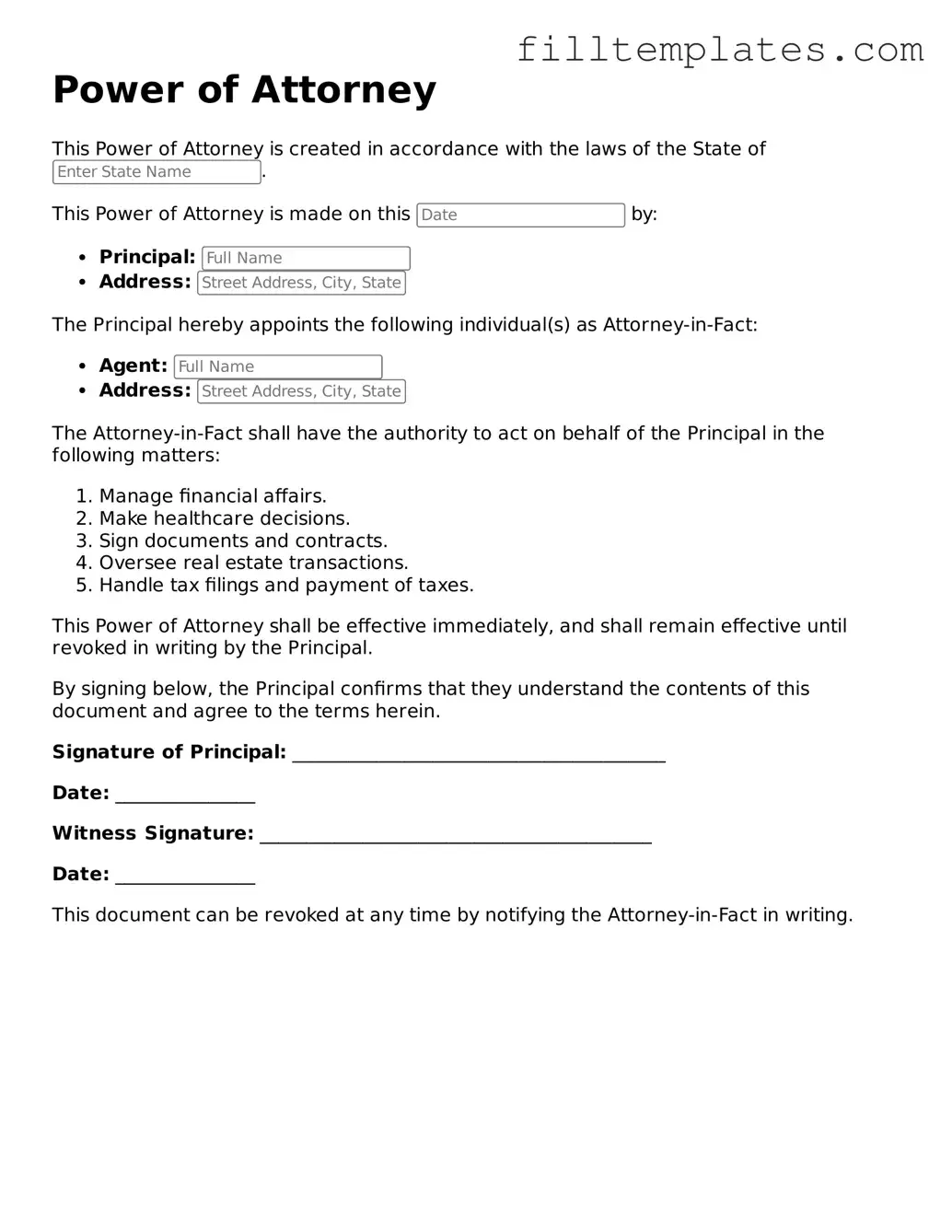Free Power of Attorney Template
A Power of Attorney form is a legal document that allows one person to grant another individual the authority to act on their behalf in various matters, such as financial or medical decisions. This form empowers a trusted person, known as the agent or attorney-in-fact, to make choices that align with the principal's wishes. Understanding the importance and implications of this document is essential for anyone considering its use.
Open Power of Attorney Editor
